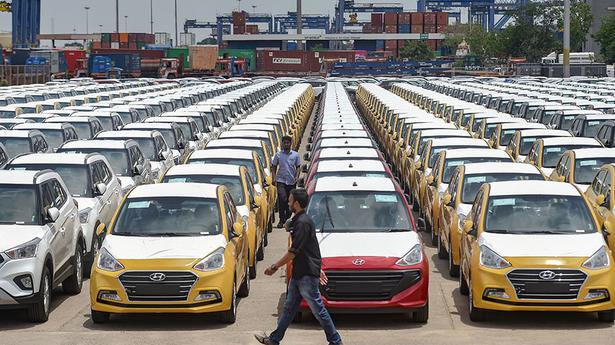As regulators train their sights on stablecoins, what should people know about this asset class
As regulators train their sights on stablecoins, what should people know about this asset class
The story so far: In early July, the Financial Stability Board (FSB), a body which advises major economies on international finance, promised to push for stablecoin regulation, citing “recent turmoil” in the cryptocurrency market. The international body said it is “Working to ensure that crypto-assets are subject to robust regulation and supervision.” The group is slated to report in October to G20 Finance Ministers and Central Bank Governors on regulatory and supervisory approaches to stablecoins and other crypto-assets.
The FSB is not the only organisation seeking to regulate stablecoins. Last month, the European Commission and EU-based lawmakers agreed on the Markets in Crypto-Assets, or MiCA law, to enforce strict controls on the companies distributing the cryptocurrencies classified as stablecoins.
(Sign up to our Technology newsletter, Today’s Cache, for insights on emerging themes at the intersection of technology, business and policy. Click here to subscribe for free.)
What are stablecoins?
A stablecoin is a digital currency whose value is pegged to a ‘stable’ asset, such as the U.S. dollar or gold. The best-known stablecoin in the crypto ecosystem today is arguably Tether (USDT), whose market cap is close to $66 billion, putting it below Ethereum, the second largest cryptocurrency in existence.
1 USDT is meant to be worth 1 USD, though market factors can take prices slightly above or below this mark. Other stablecoins such as USD Coin (USDC) and Binance USD (BUSD) are also pegged to the U.S. dollar and are known for their high market cap values. Tether also recently launched a stablecoin pegged to the British pound.
Stablecoins are not authorised for use by a country’s lawmakers or central bank. That means investors take on considerable legal and financial risk to hold them.
What roles do stablecoins play in the crypto ecosystem?
For a cryptocurrency trader, tracking stablecoin flows can help them gauge the state of the market, or even make educated guesses about future cryptocurrency price movements.
For example, when the stablecoin supply on crypto exchanges spikes, it might be a sign that investors are cashing in their stablecoins to buy cryptocurrencies such as Bitcoin (BTC), Ether (ETH), or even other alt coins. Many traders believe this can lead to upward price moves. On the other hand, if the stablecoin supply on crypto exchanges suddenly drops, one might conclude that traders are buying these relatively steadier assets. This could mean traders want to hedge against future risk and volatility, or are driven by fear.
What are the use cases for stablecoins?
Across the world, stablecoins can—and do—serve as literal lifelines. In countries such as Turkey, Nigeria, and Argentina where the local currency is rapidly losing value, converting funds to stablecoins is one way for residents to try and safeguard their earnings. In Taliban-occupied Afghanistan, with remittance channels choked by American sanctions, stablecoin transfers helped a few crypto users live to see another day. For this reason, a large section of the crypto community does not want stablecoins to be controlled by centralised laws or standards.
How ‘stable’ are stablecoins?
Stablecoins are only as stable as their investors’ faith in the peg. Case in point: Tether has been dragged through the American legal system as investigators struggled to ascertain whether the top stablecoin company really backed every USDT against a U.S. dollar. This type of peg is called a “fiat collaterised” stablecoin. Tether’s market cap, shooting up by billions of dollars in the past year and potentially threatening the balance of the U.S. dollar itself, didn’t help allay these fears.
In October 2021, the U.S. Commodity Futures Trading Commission (CFTC) ordered Tether to pay over $40 million, “for making untrue or misleading statements and omissions of material fact in connection with the U.S. dollar tether token (USDT) stablecoin,” according to its release. Tether’s market cap—totalling more than $80 billion in April this year—has slipped down to around $66 billion in July.
How is the Terra fallout linked to stablecoins?
TerraUSD (UST) is an algorithmic stablecoin. It is linked to another token’s supply. The other cryptocurrency, LUNA, is adjusted to help UST maintain its peg. This method of linking with another token helps keep crypto firms from buying reserve assets such as dollars or crypto or even gold. Yet shortly before the May crash, founder Do Kwon announced his plan to buy billions in Bitcoin and other assets to further strengthen the UST stablecoin—an ambition which did not pan out as expected.
Soon afterwards, a multitude of market factors and company failures collided, resulting in the UST stablecoin coming loose from its peg—before losing nearly 100% of its value. As billions of dollars were blown up in the May 2022 crash, partially due to UST, several other stablecoins like USDT also lost value temporarily as investors panicked.
Now, crypto analytics show a rising demand for USDT’s rival USDC, which comes just below it in market cap. Roughly $11 billion divides the two stablecoins, and many are watching to assess how USDT faces its legal hurdles.
What is the path ahead for stablecoins?
The risks within the stablecoin ecosystem are very high. And now, as regulators step in, the market is expected to make traders more fearful. Terra is not the first or only fault line in the stablecoin market, and it won’t be the last.




